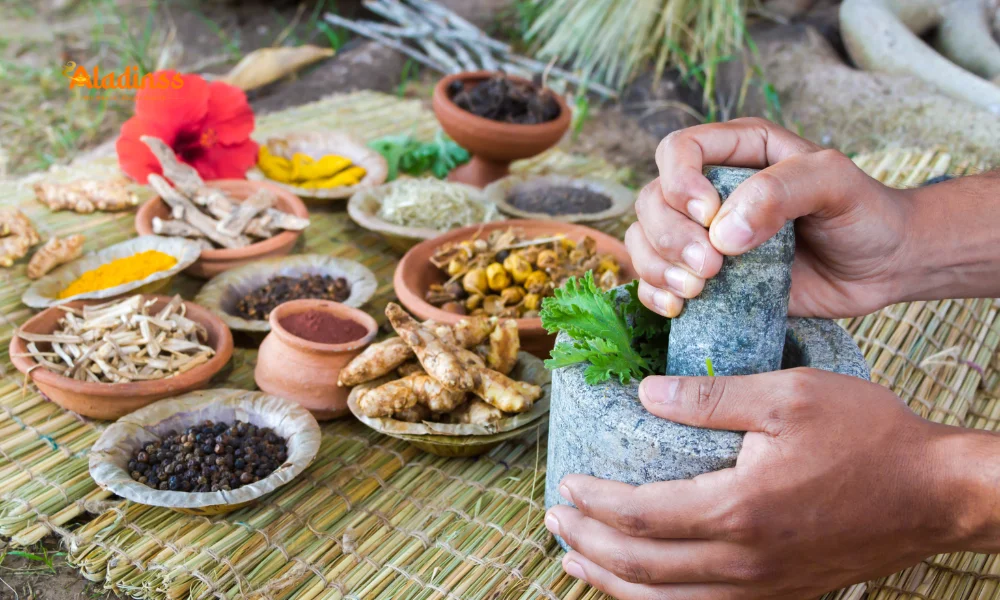Modern Science in Ayurveda: R&D Innovations 2025

Modern Science Meets Ancient Wisdom: How R&D Is Shaping The Future Of Ayurveda
Ayurveda, the ancient science of life, is experiencing a renaissance through cutting-edge research and development, blending timeless wisdom with contemporary ayurveda innovations. As we mark World Ayurveda Day on September 23, 2025, experts highlight how modern R&D is decoding Ayurveda's principles, making them more accessible and effective for today's health-conscious consumers. Komal Sharma, R&D and Ayurveda Scientist at Nat Habit, emphasizes that this fusion ensures formulations remain 100% natural while leveraging scientific validation for enhanced potency. From advanced extraction techniques to personalized wellness solutions, the integration of science into ayurveda is paving the way for global health advancements, addressing chronic issues like diabetes and stress with evidence-based, sustainable approaches.

Background: The Timeless Roots of Ayurveda in Science
Ayurveda, originating over 5,000 years ago in ancient India, has always been grounded in empirical observation and systematic validation, much like modern science. Texts like the Charaka Samhita and Sushruta Samhita outline principles of balance, herbal pharmacology, and holistic healing that predate contemporary methodologies. Yet, for centuries, these insights remained articulated in philosophical terms rather than the quantitative language of today's labs. The resurgence of interest in ayurveda coincides with a global shift toward natural, preventive healthcare, driven by rising chronic diseases and a demand for toxin-free alternatives.
Historically, Ayurveda's science was validated through generations of trial and error, with sages like Charaka emphasizing dosha balance (vata, pitta, kapha) as a foundational concept. Today, institutions like the Central Council for Research in Ayurvedic Sciences (CCRAS) are bridging this gap, conducting phytochemical analyses and clinical trials to substantiate traditional claims. 1 Recent studies, such as those on Ashwagandha for stress reduction, have shown promising results in reducing cortisol levels by up to 30%, aligning ancient wisdom with biochemical evidence. 3 This background sets the stage for R&D efforts that honor Ayurveda's holistic ethos while subjecting it to rigorous scientific scrutiny.
Latest Update: Innovations in Ayurvedic Extraction and Formulation
In the realm of ayurveda R&D, traditional processes like Kwath (decoction) are being revolutionized through modern science. Komal Sharma notes that while ancient methods involved prolonged boiling to extract botanicals, today's techniques employ advanced standardization, precise temperature controls, and concentration management. This preserves heat-sensitive compounds such as curcumin from turmeric and flavonoids from hibiscus, enhancing bioavailability without altering the essence of ayurveda.0
Emerging innovations include cold-processing to retain volatile nutrients, micro-milling for improved absorption, and nano-encapsulation to stabilize active ingredients like azadirachtin from neem. These advancements, detailed in recent CCRAS programs on network pharmacology from September 15-20, 2025, allow for formulations that integrate seamlessly into modern lifestyles—think targeted serums, immunity boosters, and stress-relief oils. 1 A prime example is BGR-34, an Ayurvedic antidiabetic drug developed through interdisciplinary collaboration, demonstrating blood sugar control comparable to allopathic options. 7 Such updates underscore how R&D is making ayurveda not just viable but superior in efficacy and safety.
Social Reactions: A Wave of Enthusiasm for Science-Backed Ayurveda
Social media is abuzz with excitement over the fusion of modern science and ayurveda, especially ahead of World Ayurveda Day. On platforms like X, users are sharing personal stories of transformation, from using science-validated Ashwagandha supplements for anxiety to neem-based skincare routines backed by clinical trials. Hashtags like #AyurvedaInnovation and #ScienceMeetsAyurveda are trending, with influencers praising how these advancements make ancient remedies accessible without synthetic additives.
One viral thread from a wellness blogger detailed a 2025 study on Amla's role in diabetes management, garnering thousands of shares and sparking debates on integrating ayurveda into daily diets. 3 While some express skepticism about commercialization diluting traditions, the overwhelming sentiment is optimistic, with calls for more government funding in R&D to globalize these innovations. Community forums highlight success stories, like reduced inflammation from encapsulated sandalwood extracts, fostering a sense of empowerment through evidence-based natural healing.
Expert Views: Bridging Ayurveda and Modern Science
Experts across disciplines affirm that the marriage of ayurveda and science is not merely additive but transformative. Dr. Bhushan Patwardhan, a pioneer in integrative medicine, argues for "reverse pharmacology," where Ayurvedic formulations are fast-tracked through clinical validation, reducing development time by 50% compared to new drug discovery. 5 This approach has yielded breakthroughs like standardized Turmeric extracts with 95% curcumin purity, far surpassing traditional preparations.
Komal Sharma echoes this, stating, “By respecting Ayurveda's frameworks while applying rigorous science, we ensure eco-certified, toxin-free products that meet global standards.” 0 At the National Institute of Ayurveda, ongoing certificate courses on integrative cardiology from July 2025 blend yoga, ayurveda, and modern diagnostics for heart health. 13 Phytochemical researchers highlight how biotechnology validates herbs like Rauvolfia for hypertension, confirming reserpine's efficacy while addressing conservation challenges. 3 These views position ayurveda as a forward-looking science, adaptable to personalized medicine via AI-driven dosha assessments.
Future Impact: Ayurveda's Role in Global Health Innovation
The trajectory of ayurveda R&D promises profound impacts on global health, with projections estimating a $20 billion market by 2030. Innovations like AI-personalized herbal blends and longevity programs integrating Panchakarma with biohacking are redefining wellness travel, as seen in Sri Lanka's Santani retreats combining ayurveda with cryotherapy. 8 This synergy could slash healthcare costs by emphasizing prevention, potentially reducing chronic disease burdens by 25% in adopting regions.
Sustainability is key; R&D focuses on endangered species conservation through tissue culture, ensuring ethical sourcing of plants like Rauvolfia.3 Collaborations under the Ministry of AYUSH's 2024 theme “Ayurveda Innovations for Global Health” extend to over 150 countries, fostering evidence-based protocols for issues like metabolic health.2 In India, initiatives like the WHO Global Centre for Traditional Medicine in Jamnagar will accelerate clinical trials, validating formulations for international pharmacopeias.12
Economically, this boom supports rural economies via organic farming and exports, while educationally, programs like CCRAS's CME on network pharmacology equip scientists for interdisciplinary roles. 1 Challenges remain, such as standardizing reverse pharmacology to meet FDA-like rigor, but the future is bright: ayurveda, powered by science, could lead in personalized, eco-friendly healthcare, harmonizing body, mind, and planet.
As 2025 unfolds, expect surges in biotech-Ayurveda hybrids, like genomic testing for dosha-specific therapies, revolutionizing longevity science. 8 This evolution not only validates ancient texts but propels ayurveda into a cornerstone of 21st-century medicine, promising equitable health for all.
The ripple effects extend to policy, with calls for increased R&D funding under Horizon 2020-inspired frameworks, integrating predictive medicine. 9 For consumers, it means safer, more potent products; for researchers, endless frontiers in herbal genomics. Ultimately, this science-infused ayurveda embodies resilience, adapting millennia-old wisdom to modern exigencies.
Comment / Reply From
No comments yet. Be the first to comment!






